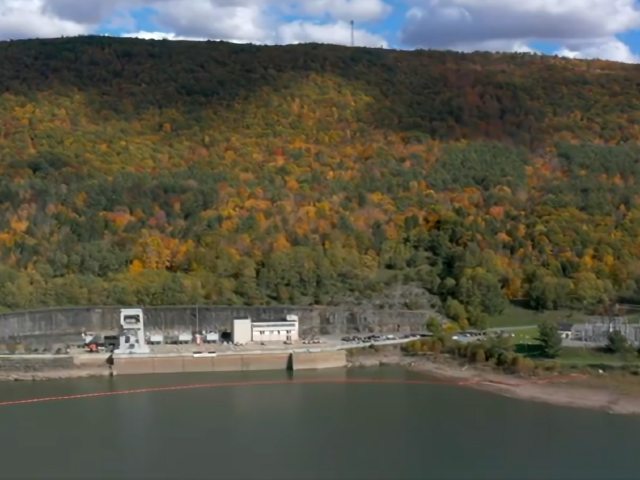The New York Power Authority (NYPA) has received its first federal approval to fly unmanned aircraft systems (UAS) or drones beyond the visual line of sight (BVLOS) of the pilot in command.
This Federal Aviation Administration (FAA) waiver enables NYPA to conduct fully remote drone operations, such as asset and vegetative management inspections, at its 1,160MW Blenheim-Gilboa Pumped Storage Power Project in Schoharie County, about 60 miles from Albany, New York.
NYPA’s drone programme supports its asset management strategies and is part of an authority-wide digitisation initiative to modernise grid infrastructure to advance the efficient delivery of clean power statewide, according to a release.
Have you read?
Why hydropower can no longer go with the flow
Statkraft and Inovyn sign 130MW hydropower PPAs
“The Power Authority is proud to be leading the way in the advanced deployment of automated flight technologies for use in the utility industry,” said Justin E. Driscoll, New York Power Authority acting president and chief executive officer. “Drones will become an even more valuable tool as we expand our capability to detect infrastructure issues and support our mapping and land management responsibilities. Being able to capture images remotely, regardless of weather conditions or distances, will allow us to track and evaluate our assets more efficiently and safely.”
FAA Part 107 regulations require pilots to maintain visual contact while operating a drone. This waiver allows operators to conduct operations without the requirement for the pilot or an observer to see the unmanned aircraft or to scan the surrounding airspace throughout the entire flight. Routes, however, must be pre-planned and the drone must remain within 50 feet above ground level or within 50 feet of structures.
The waiver was obtained with the help of Skydio, a US drone and software manufacturer providing equipment and advisory services. The waiver, which is specific to Skydio drones, authorizes operations through 2027 and grants NYPA the capability to conduct remote operations from other locations without an on-site pilot or visual observer. The timing of the waiver dovetails with the launch of a new drone docking technology by Skydio that allows drones to take off and land autonomously with a pilot directing operations from a remote location.
“This important approval enables NYPA to operate Skydio drones beyond line of sight without visual observers,” said Jenn Player, Skydio’s senior director of regulatory affairs. “Skydio autonomy and collision avoidance capabilities are key to conducting these low-altitude, high-value operations safely and easily.”
Peter Kalaitzidis, NYPA’s UAS programme manager, who submitted the application, said the Blenheim-Gilboa Pumped Storage Project was proposed as a first use case to prove the technology’s application, primarily because of the sparser population in the region. Drones are already being operated at various NYPA sites to monitor asset health, including for inspection of transmission lines, vegetation management and monitoring of overgrown trees, and spillway erosion mapping.
“Our application demonstrated to the FAA that we are ready to enhance our program and capabilities,” Kalaitzidis said. “Having this waiver removes limitations and unlocks opportunities moving forward. We will continue to explore potential uses for this technology that will benefit the Authority and hopefully the industry at large. At present, we are developing the procedures, mitigation steps and hardware so we can best use these resources over the next few years.”
NYPA’s in-house drone programme is researching and testing new applications to implement drones more fully into day-to-day utility operations while maintaining high standards of aviation professionalism and safety. More than 40 employees are trained as drone pilots.
NYPA is the largest state public power organization in the US, operating 16 generating facilities and more than 1,400 circuit-miles of transmission lines. More than 80% of the electricity NYPA produces is clean renewable hydropower.
Originally published on hydroreview.com
